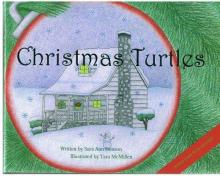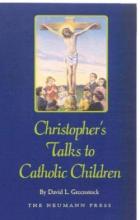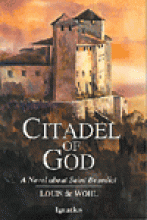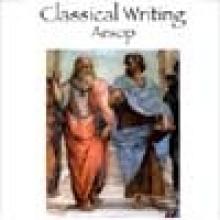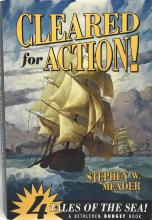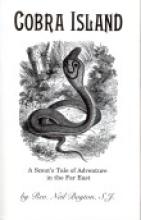No name
Christian Kids Explore Chemistry
Christmas Turtles
This is a simple, charming and true story, from the author's own childhood, of a grandmother and her four grandchildren, for whom she makes Christmas Turtles each year with the pecans from her own yard.
The children discover the real "magic" that goes into making these favorite treats and how very much their grandmother really loves them. A recipe for the turtles is included in the back!
The layout of the pages is unusual. The typeface is quite large and the illustrations look like they were drawn by the narrator, the author as a young girl. My son complained about the faces at first, but once I read it aloud to all of my "middles" (ages 4-11), they all REALLY loved it and especially can't wait to make some turtles themselves.
The book came into our lives at a perfect time, when we're trying to move toward more homemade gifts for Christmas and for making more time during the busy holidays to do things like baking with the children.
Available from your local bookstore.
Christopher's Talks to Catholic Children
What a beautiful book! Do you imagine teaching the catechism to your children through stories and illustrations? This is the book to use. Christopher's Talks to Catholic Children is a book of stories for children from the youngest ages up through elementary school. Written in the first person with a friendly, gentle tone, each story is a beautifully-presented lesson in the whole of the catechism. Even better, the author has included simple line drawings in the stories that he recommends be drawn by the storyteller during the telling of the story and copied by the children to help them remember the lesson.
This edition is actually the two original books bound into one volume. Book 1 contains stories on such topics as God, the Angels, the sin of Adam and Eve, actual grace, the sacraments, baptism, confirmation, the resurrection and the ascension. Book 2 continues with lessons on the other sacraments, the communion of saints, the Holy Souls, the Mass, and each of the commandments, in terms that can be easily understood by children. There is one section after Book 1 titled "For Grown-ups Only" that gives many teaching hints and notes on the lessons for points that may be confusing to children. The section at the end of Book 2 gives specific guidance for the preparation of children for First Penance and First Communion.
I'm delighted to have found this book! It is a wonderful addition to our religion classes and should have a place in every Catholic home. It could be used profitably in homeschools of every description. My only regret is that this book was published in softcover only. It is printed on high-quality, easy-on-the-eyes off-white paper in the style of the books produced by Ignatius Press. I can foresee a lot of wear on the cover when the book is used with several successive children, and I would prefer a hardbound book to keep for the next generation.
Citadel of God
Against this backdrop, the novel goes on to tell of the lives of Boethius, who becomes governor for the king in spite of his patriotism for the dying Rome; Peter, the young would-be assassin and patriot, who grows up to become a conflicted Byzantine ambassador; and Benedictus, who becomes appalled by the corruption in Roman society and retreats into the wilderness to become a hermit. Eventually he founds several monasteries and travels to Montecassino. He drives out pagan sorcerers, works miracles and founds a monastery that truly became a "Citadel of God" that stood against paganism and Arianism, while the scholar Boethius is jailed and executed by the increasingly paranoid king, after writing The Consolation of Philosophy.
This book is strongly and vividly written, telling an epic tale of several famous lives intertwined during this unstable and critical time in the history of Christendom. The reading and interest level are suitable for ages 14 and up; however, the emotional maturity level may be somewhat higher. There are a couple of scenes, as when a Roman lady tries to seduce the young Benedictus, or a corrupt Christian priest converses with his mistress, that though not overly graphic might be unsuitable to some young readers.
City: A Story of Roman Planning and Construction
Various editions available
Classical Writing: Aesop
If you are attracted to the classical method of teaching composition, by analyzing and imitating excellent literature, but have struggled with implementing your own program, then this is the writing series for you. Meticulously thought through and well organized, Classical Writing: Aesop combines structure with flexibility. It can be used with multiple ages in the homeschool and, though designed for beginning writers in grades 1-5, can be adapted for older ages. It uses homeschool-friendly methods such as copywork, dictation, literary discussion and narration, as building blocks for composition skills.
Classical Writing: Aesop is the first in a proposed series which will cover the various steps of the progymnasata (literally "preliminary exercises") by which classical and medieval students were taught to write in a variety of different modes. Classical Writing: Aesop covers the first exercise in the progymnasata, narration of fables. The child learns to retell simple fables and tales in his own words, adding dialogue and description in easy increments over the course of the curriculum. This is the "imitation" component.
The analysis component of the course, in which the literature selection is carefully gone over at several different levels, can be adjusted to the level of the student(s). A week's routine is divided into (1) introducing and discussing the model (2) word skills (3) sentence skills (4) copywork or easy dictation. A beginner would practice basic phonics and learn about how to tell a sentence. A more advanced student would practice beginning dictionary skills and learn the parts of speech. Though a supplemental grammar book is recommended, Classical Writing contains teaching tips and content for all the formal grammar that is needed at this level.
There are plenty of charts to help with the organization of the course. Appendices include some sample fables and tales to use as models, and even a sample 36-week syllabus for busy moms who want to pick up the book and go rather than write their own lesson plans (though a sample lesson plan template is included, too). There is even a description of how the authors, both homeschooling mothers of four, use the program with their own children, with examples of narrative exercises by their children of various ages.
This is not intended to be a self-teaching curriculum. It is meant for the homeschooling parent to use *with* children. It is suggested that half an hour per day be spent on each of the components of the course, analysis and imitation, four days a week. The authors believe that composition is a formative skill, and should be guided: "training in speech and writing cannot be separated from training in virtue". The goal is a "habit of mind" which the students can apply to any writing task. This is a thoroughly Catholic idea – that "academic" skills should be at the service of virtue– that I have not found so well stated and carried through in any other writing curriculum. I am looking forward to using this program with my grade school children, and have already adapted elements of it for use with my older children.
The book is available in a Kinko's copy, or in a PDF file that can be downloaded from the internet. The PDF file is probably the most versatile, since multiple copies of the sample models can be printed out for use with more than one child. See below for the Classical Writing website, which also has a link to a message board for support of this product.
The authors also offer Traditional Tales - Models for Classical Writing, a sourcebook of 36 fables and traditional tales to use with the composition course. The models include fairytales, Scripture, history stories by James Baldwin, in addition to fables by Aesop: all excellent literature which can be read by the fluent primary age child. This book is not an essential companion to Classical Writing, since the sources are all in the public domain and can be found online (some URLs are listed in the handbook). Still, it is a savings of time and effort for the homeschool mom to have them selected and right at one's fingertips. Downloadable PDF format and Kinko's copy format both available from Classical Writing.
Cleared for Action
This "Budget Book" offers four full-length stories in one volume...
Clear for Action by Stephen Meader (copyright 1940) Clear for Action tells of American sailing at the beginning of the War of 1812. Jeff Robbins is a young sailor from Maine, taking his first voyage aboard a cargo schooner bound for the Carribean. All aboard are nervous about being overtaken by British vessels who have been intercepting ships, blocking harbors and making trouble all along the Atlantic Coast. Jeff's world is turned upside down when their schooner is apprehended and he and several of his shipmates are forced into service on a British frigate. Clear for Action is an interesting and worthwhile adventure story that provides all kinds of insightful angles on the War of 1812 and offers a unique contrast to very-British Midshipman Quinn collection. The story wraps up amidst interesting plot-twists – a deserted island, buried treasure and big plans.
Reviewed 4-29-02
Whaler Round the Horn by Stephen Meader (copyright 1950)
Stephen Meader's "whaling yarn" brings to life the exciting and dangerous adventures of a New England whaleboat sailing all the way around Cape Horn (at the tip of South America) to the Pacific Ocean. Young Rodney Glenn, an orphan from New Hampshire, has always wanted to be a whaler, and we follow him aboard his first time at sea. Everything is new and exciting to his young eyes and young people of today will readily relate to his adventures.
Historically speaking, it's nice to find a story that gives an honest look at the interesting but sometimes ugly world of whaling without the politically correct shock and contempt with which whalers of the past are generally treated today. This was uniquely important to me in that one of my great-great-great grandfathers was a Portuguese whaler from the Azores. The first time I told my daughter about this ancestor (who was also a third order Carmelite) she reacted with disgust, given her great interest in whales and the number of books and shows on whales she had eagerly digested.
In addition to the whale theme which contains undercurrents of Moby Dick, 19th Century Hawaii provides a unique contrast with the home port in New England and the main character's adventures through massive storms (the Perfect Storm has little on this), harrowing escapes from the "jaws of death" and adventures on a deserted stretch of one of the Hawaiian Islands make for a memorable and engaging story.
Reviews of the other two stories in the Budget Book Cleared for Action by Stephen Meader will be forthcoming.
Copyrights 1940-1950
This book was donated for review by Bethlehem Books
Close to the Wind
Cobra Island
The story is a fun read, especially for boys (ages 12 and up). It is written in a first-person narrative and in a rather humorous and informal style (a little reminiscent of P.G. Wodehouse, even though the story is American, not British).
This title was donated for review by St. Aidan Press

